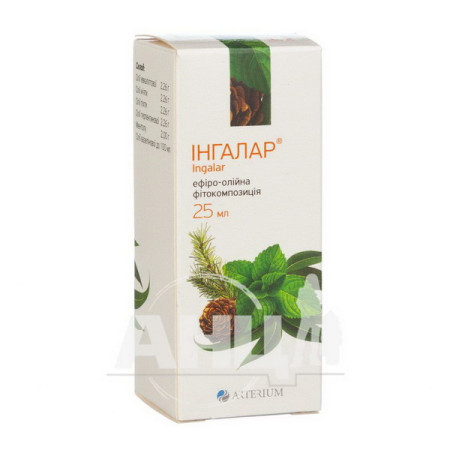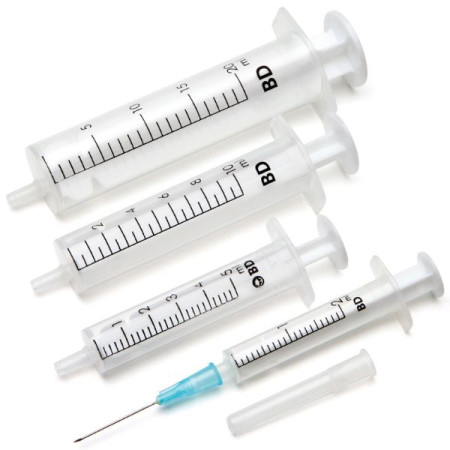Protecon coated tablets container No. 60

Instructions for Protecon film-coated tablets container No. 60
Composition
active ingredients: chondroitin, glucosamine;
1 film-coated tablet contains glucosamine sulfate sodium chloride in terms of glucosamine sulfate 500 mg, chondroitin sulfate sodium 400 mg;
Excipients: microcrystalline cellulose, colloidal anhydrous silica, talc, croscarmellose sodium, hypromellose, polyethylene glycol (PEG-6000), titanium dioxide (E 171), tartrazine (E 102), hydrogenated castor oil.
Dosage form
Film-coated tablets.
Main physicochemical properties: film-coated tablets, yellow, oval, biconvex, with a score on one side.
Pharmacotherapeutic group
Means used for pathologies of the musculoskeletal system.
ATX code M09A X.
Pharmacological properties
Pharmacodynamics.
Glucosamine is a substrate for the construction of articular cartilage and stimulates the regeneration of cartilage tissue. Glucosaminoglycans and proteoglycans are part of the complex matrix that makes up cartilage.
Glucosamine is a part of endogenous glycosaminoglycans of cartilage tissue and stimulates the production of proteoglycans and increases the absorption of sulfate by articular cartilage. Thus, glucosamine replenishes the endogenous deficiency of glucosamine. It participates in the biosynthesis of proteoglycans and hyaluronic acid, thereby counteracting the progression of degenerative processes in the joints, spine and surrounding soft tissues. Stimulates the formation of chondroitin sulfate, normalizes calcium deposition in bone tissue, contributes to the restoration of joint functions and the disappearance of pain syndrome.
Chondroitin is a high-molecular mucopolysaccharide that exhibits chondroprotective anti-inflammatory and analgesic effects. It also stimulates the regeneration of cartilage tissue and affects phosphorus-calcium metabolism in it. Chondroitin slows down bone resorption and reduces calcium loss, slows down the processes of cartilage degeneration. It prevents the compression of connective tissue and "lubricates" joint surfaces, normalizes the production of joint fluid.
Pharmacokinetics.
When administered orally, glucosamine is rapidly and completely absorbed from the digestive tract, with a bioavailability of 25–26%. Approximately 90% of glucosamine administered orally is absorbed from the small intestine in the form of glucosamine salt and from there through the portal circulation to the liver. It is metabolized in the liver to form urea, water and carbon dioxide. About 30% of the dose taken persists in the connective tissue for a long time. It is excreted mainly by the kidneys, and in a very small amount by the intestines.
When administered orally, the bioavailability of chondroitin is 13–15%. The maximum concentration in blood plasma (Cmax) is reached after 3–4 hours, in synovial fluid – after 4–5 hours (after a single administration). It accumulates mainly in cartilage tissue (the maximum concentration in articular cartilage is reached after 48 hours); the synovial membrane is not an obstacle to its penetration into the joint cavity. It is excreted by the kidneys within 24 hours.
Indication
Degenerative-dystrophic diseases of the joints and spine; primary and secondary osteoarthritis, osteochondrosis, shoulder-scapular periarthritis; fractures (to accelerate the formation of bone callus).
Contraindication
Hypersensitivity to the active substances or to other components of the drug; bleeding tendency; thrombophlebitis; diabetes mellitus; renal/hepatic insufficiency in the decompensated stage, phenylketonuria.
Do not use in patients with hypersensitivity (allergy) to seafood.
Interaction with other medicinal products and other types of interactions
The drug is compatible with nonsteroidal anti-inflammatory drugs and corticosteroids.
Concomitant use of glucosamine and warfarin may increase the international normalized ratio (INR) and cause bleeding. Therefore, blood coagulation parameters should be monitored during concomitant use.
When used simultaneously with other medicines, the following interactions are possible:
with indirect anticoagulants, antiplatelet agents, fibrinolytics - increased action of the latter; with simultaneous use, blood coagulation parameters should be monitored;
with nonsteroidal anti-inflammatory drugs, corticosteroids - reducing the need for them, as well as for painkillers;
with tetracycline group drugs - increased absorption of the latter;
with penicillins, chloramphenicol - reduced absorption of the latter.
The effectiveness of treatment with the drug increases when the diet is enriched with vitamins A, C and salts of manganese, magnesium, copper, zinc and selenium.
Glucosamine may affect the blood concentration of cyclosporine.
Application features
When using, do not exceed recommended doses.
Patients with diabetes should monitor their blood sugar levels more frequently, especially at the beginning of treatment. The drug should be used with caution in patients with bronchial asthma, as symptoms of the disease may worsen. Such patients should be monitored and warned about the possibility of complications.
In rare cases, edema and/or water retention have been observed in patients with heart or kidney failure. This may be due to the osmotic effect of chondroitin sulfate.
1 tablet contains 3.978 mmol (91.47 mg) sodium. This should be taken into account by patients on a controlled sodium diet (low sodium/salt).
The presence of castor oil in the composition may cause stomach upset and diarrhea.
The excipients include the dye tartrazine (E 102), which may cause hypersensitivity and allergic reactions.
The drug should be used with caution in patients with impaired liver and/or kidney function.
Use during pregnancy or breastfeeding
Safety and efficacy have not been established, therefore it should not be used during pregnancy or breastfeeding. If necessary, breastfeeding should be discontinued.
Ability to influence reaction speed when driving vehicles or other mechanisms
Studies on the effect of the drug on the reaction speed when driving vehicles or other mechanisms have not been conducted. If drowsiness, fatigue, dizziness and/or visual disturbances occur during the use of the drug, you should refrain from driving vehicles or other mechanisms.
Method of administration and doses
The drug should be used by adults during the first 3 weeks at a dose of 1 tablet 3 times a day, then 1 tablet 2 times a day. The duration of treatment is 2–3 months. The course should be repeated 2–3 times a year.
Children
Safety and efficacy have not been established, so the drug should not be used in children.
Overdose
Cases of overdose have not been described. Possible exacerbation of adverse reactions. Based on the results of acute and chronic toxicity studies, no toxic symptoms are expected, even at high doses. In case of symptoms of overdose, symptomatic therapy is recommended.
Side effects
Available data indicate that glucosamine and chondroitin sulfate at commonly prescribed doses (1500 mg/day and 1200 mg/day, respectively) are non-toxic and generally do not cause adverse reactions.
The following adverse reactions have been reported during post-marketing experience with the medicinal product. As the information was provided voluntarily from a population of uncertain size, it is not always possible to estimate the frequency of these reactions.
From the nervous system: dizziness, drowsiness, headache, insomnia, feeling of fatigue, weakness, visual disturbances.
From the cardiovascular system: extrasystoles (according to literature).
On the part of the digestive tract: pain in the epigastric region of moderate or moderate severity, flatulence, diarrhea, constipation, nausea, vomiting, dyspepsia.
Immune system, skin and subcutaneous tissue disorders: hypersensitivity reactions, including rash, itching, erythema, urticaria, angioedema; dermatitis, eczema, hair loss. If allergic reactions occur, treatment should be discontinued and a specialist should be consulted.
Other: edema.
All manifestations are moderate and disappear after discontinuation of the drug.
Reporting adverse reactions after registration of a medicinal product is of great importance. This allows monitoring of the benefit/risk ratio when using this medicinal product. Medical and pharmaceutical professionals, as well as patients or their legal representatives, should report all cases of suspected adverse reactions and lack of efficacy of the medicinal product via the automated pharmacovigilance information system at the link: https://aisf.dec.gov.ua
Expiration date
3 years.
Storage conditions
Store in the original packaging at a temperature not exceeding 25 °C, out of the reach of children.
Packaging
10 tablets in a blister; 3 blisters in a cardboard pack;
10 tablets in a blister; 3 blisters in a cardboard pack; 3 packs in a cardboard pack;
30, 60 or 120 tablets in containers; 1 container in a cardboard pack.
Vacation category
Without a prescription.
Producer
Evertogen Life Sciences Limited.
Saga Lifesciences Limited
Address
Plot No.: S-8, S-9, S-13/P and S-14/P T S I A C, S I Z Pharma, Green Industrial Park, Polepally (V), Yedcherla (M), Mahabubnagar, Telangana, IH-509 301, India/
Plot No: S-8, S-9, S-13/P & S-14/P TSIIC, Pharma SEZ, Green Industrial Park, Polepally (V), Jadcherla (M), Mahabubnagar, Telangana, IN-509 301, India.
Survey No. 198/2 & 198/3, Chachrawadi Vasna, Ta Sannand District, Ahmedabad, Gujarat, 382210, India / Survey No. 198/2 & 198/3, Chachrawadi Vasna, Ta Sannand District, Ahmedabad, Gujarat, 382210, India
There are no reviews for this product.
There are no reviews for this product, be the first to leave your review.
No questions about this product, be the first and ask your question.











